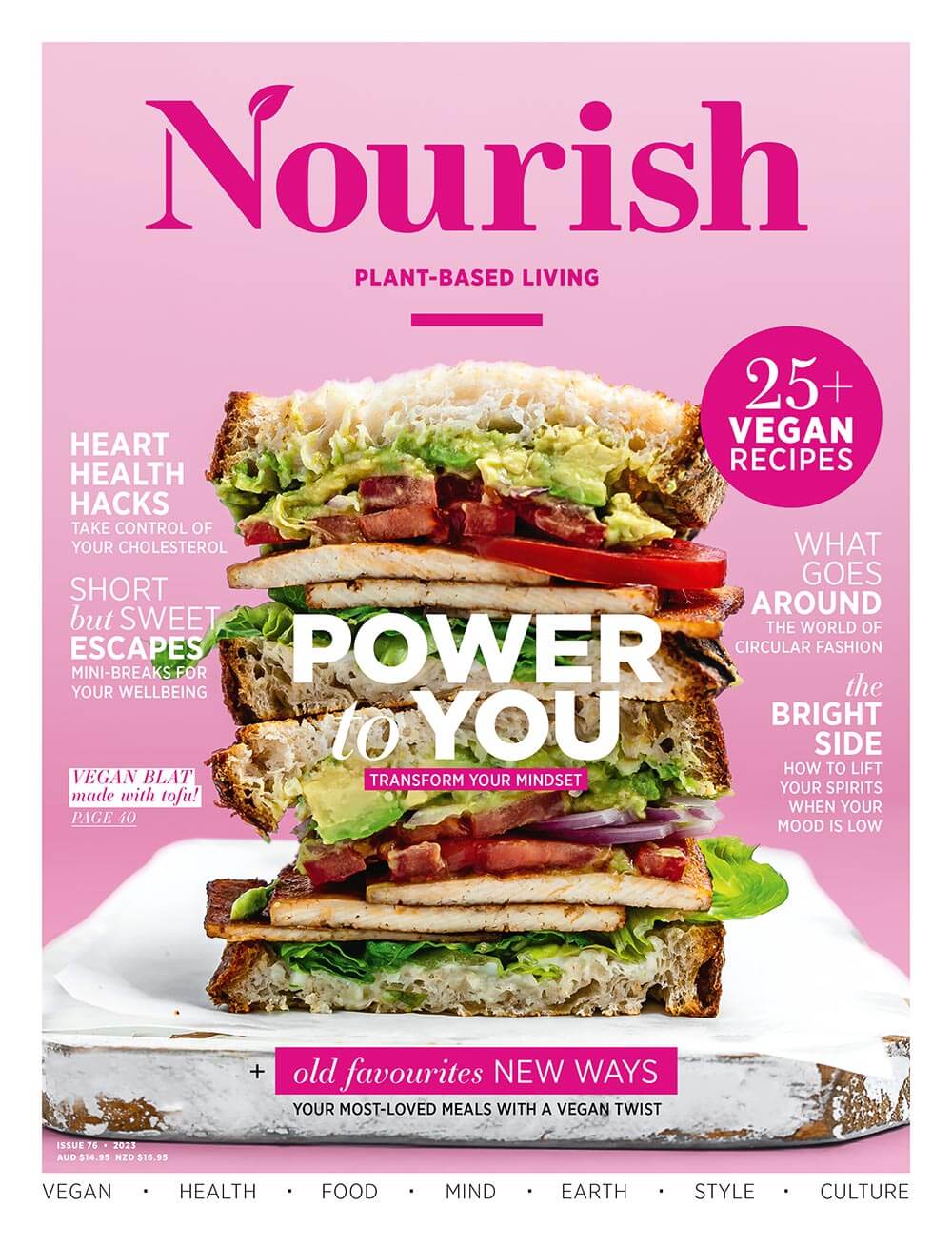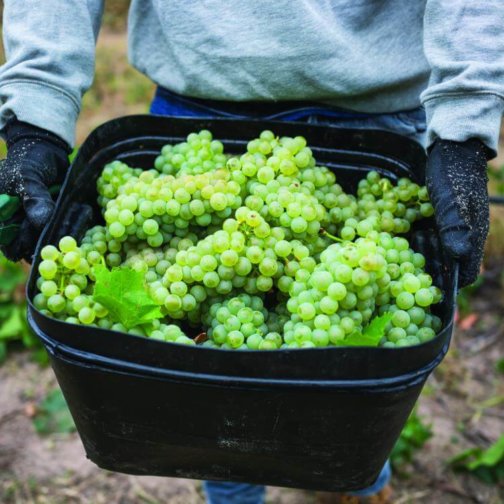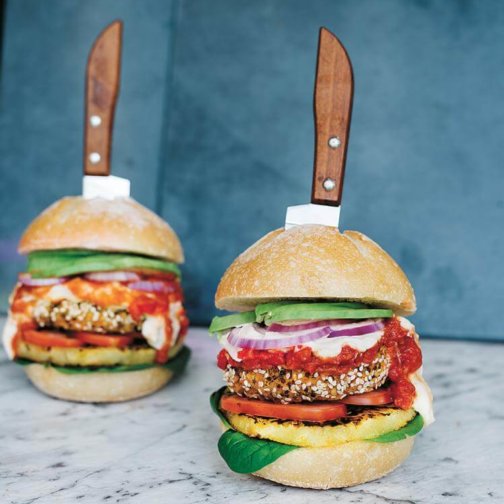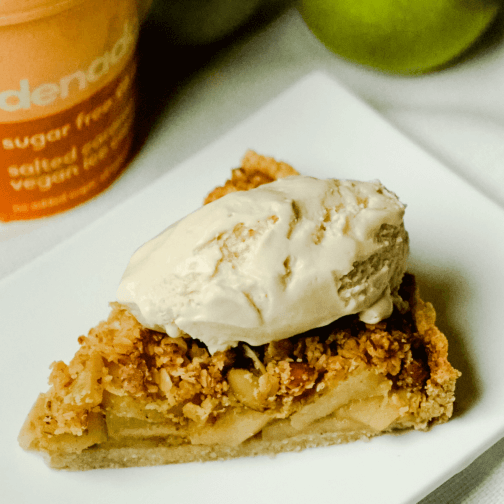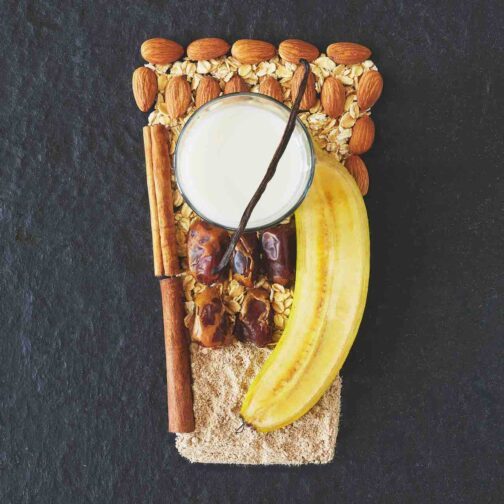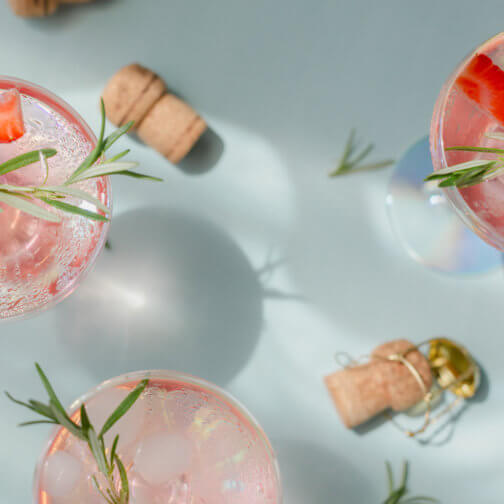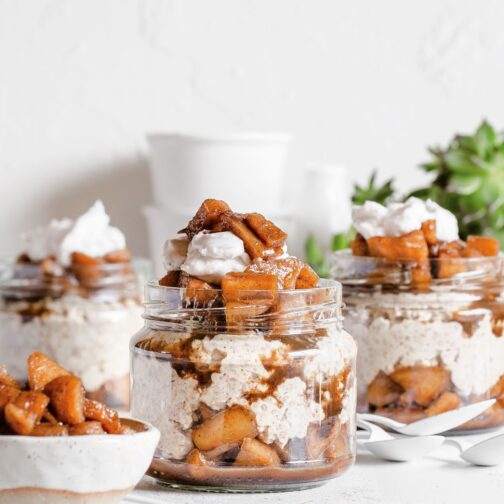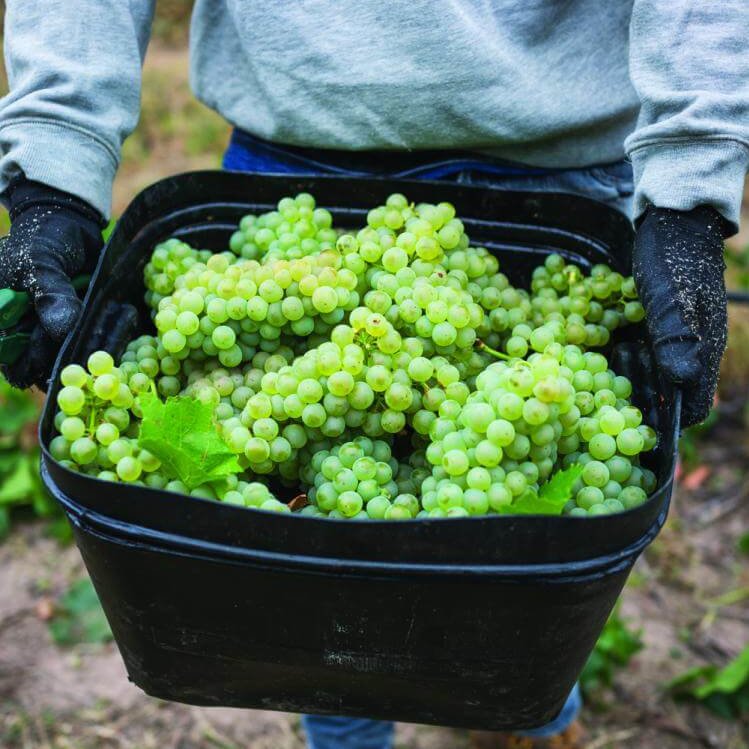More inspiring stories
Mythbusting: Gut health
If you want to get your gut in order, Dr Will Bulsiewicz is the expert to help you sort out fact from fiction. This is the gut-health cheat sheet...
Mindful escapes with Billabong Retreat
In the fast-paced and demanding world we live in, finding moments of stillness and calm can be challenging. In an attempt to find a little peace...
Plant-based recipe inspiration
Mighty vegan burger tower with ketchup and mayo
Ellie Bullen has a true passion for creating dishes that are bursting with flavour and beautifully presented and, true to form, her vegan burger...
Spicy tofu po’boys
The classic Louisiana style po'boy baguette sandwich is given a vegan twist in this hearty but guilt-free version by Amanda Logan.
The hip wiggler
The tastiest smoothie you can make, loaded with the yummiest ingredients around. Find your inner child and go wild!
'Summer fling' champagne cocktail
This refreshing, sparkling cocktail with a tint of pink is like summertime in a glass. Perfect for elegant entertaining.
Spiced apple overnight oats
A batch of these delicious overnight oats will feed you for days. Plus, you’ll be starting your day well with the prebiotics from oats, apples,...
More inspiration from our mindful collective
Natural sleep oils
Spraying sheets and pillows with calming scents can be a wonderful aid to slumber
To wander with no purpose
The next time you go for a walk, discover the wonder of the everyday world around you
Let it glow
A skincare routine can be a way to nourish yourself inside and out
Seeking the silver lining
When the clouds converge, practise gratitude for the smallest of glimmers, and learn to dance in the rain.
Vegan vino
When you’ve made a conscious decision to live a more plant-based life, you may also rethink what you drink. The good news is there are plenty of vegan-friendly wines to choose from. Here's what you need to know.
Isn’t all wine vegan-friendly? Unfortunately, no – not always. The process of winemaking can include the use of animal by-products and the sometimes confusing information about this can get in the way of you making the right choice for your lifestyle. Let’s take a look at what makes a wine vegan-friendly or not, so you can find the right drop for you.
Making the wine fine
The part of the winemaking process where animal by-products may be used is called ‘fining’ and takes place before filtering and bottling. In conventional and organic winemaking, fining is common practice and may use either vegan-friendly products or animal-derived products for this process. However, in low intervention (or low-fi) winemaking, the aim is to do as little as possible to the wine and therefore fining is avoided. This is why these wines are sometimes cloudy. Low-fi wines are naturally vegan-friendly. Whatever the style of winemaking, to ensure a wine is vegan-friendly, any additives or processing aids used in the fining process need to be free from animal by-products.
Processing aids, such as fining agents, are used to change a wine’s aroma, clarity, colour or flavour. For example, in whites they are used to make the wine brilliantly clear and in reds they are used to soften the bitterness associated with tannins. The fining agents bond with particles, which are then filtered out of the wine so they do not remain in the finished wine. The process is one of many in a winemaker’s toolkit, used to produce a certain style of wine that would otherwise not meet the quality standards of their brand. For large winemakers, and particularly conventional producers, the use of fining agents is one of many methods to ensure consistency year to year.
You put what in my wine?
Depending on what correction is needed, a winemaker can choose from several different fining agents. This is the part where the wine will become either vegan-friendly or not. The following are the most commonly used agents for conventional winemaking.
Animal-derived fining agents
Gelatine Made from prolonged boiling of skin, cartilage, and bones from animals, this is the most aggressive of proteinaceous fining agents. It’s used for clarity, reducing bitterness, and softening both white and red wines.
Isinglass Made from fish bladder and a for of protein called collagen, this is mainly used to clarify white wine. Used excessively it can impart a fishy flavour.
Casein A milk protein used in white wine to remove oxidative browning and bitterness.
Egg white Also called egg albumen, this is used to remove bitterness in red wine.
Vegan-friendly fining agents
Organic carbon Used to remove off odours in red wine and browning or pinking colours in white wine.
Organic bentonite This is a fine clay made of aluminium-silicate formed from volcanic ash. It’s used for stabilising white wine and clarifying white wine.
Synthetic PVPP Also called Polyvinylpolypyrrolidone, this is a synthetic polymer used to enhance colour in red wine and remove oxidative browning or pinking in white wine. It also reduces bitterness.
Plant proteins This includes vegetable gelatine and proteins derived from peas and potatoes.
To fine or not to fine?
That is the question, and the answer depends on the producer and the style of the wine they are trying to achieve. A growing number of winemakers are using methods that do not use animal-based fining agents. Justin Jarrett, winemaker and owner of sustainable producer See Saw Wines in New South Wales creates delicious tasting, environmentally friendly wines. He uses a plant-based fining agent called Fitoproteina P, a pea-based protein which he believes produces better results than animal-based fining agents.
There are also an increasing number of low-fi wines in the market. “Heroes” Vineyard in Victoria strives to “make wine in the vineyard”. That is, to grow grapes that don’t need improving and won’t benefit from fining. As such, viticulturist and winemaker James Thomas makes their wines with low intervention: unfined, unfiltered (at least for the reds) and with sulphur well below the organic threshold.
He says, “Our intention is to produce wines that honestly reflect the vineyard and its terrior. And for us, fining would risk clouding that direct and vivid interpretation of our soil and climate. The fact that they are all suitable for vegans is really a happy side effect of the winemaking philosophy behind our label”.
“Heroes” Vineyard identifies its wines as vegan-friendly and unlike many other brands, See Saw Wines includes a symbol on their labels to let you know their wines are vegan-friendly.
Labelling let down
Mandatory labelling laws in Australia do not require a declaration of the type of fining agent used. The laws do however require allergens to be declared. These allergens include the fining agents casein, potassium caseinate, egg white, milk and evaporated milk. So, if milk and eggs have been used, it will be stated on the label. But if isinglass has been used, this won’t necessarily be stated on the label. Other allergens that must be declared include nuts and added sulphates over 10ppm.
However, many producers are adding a vegan-friendly symbol or wording to their labels to better communicate with consumers. There isn’t a nationally recognised symbol yet, but this is a good start and a positive sign that more producers are catering for a growing market of plant-based wine lovers. Additionally, many low intervention winemakers include the words ‘unfined’ and ‘unfiltered’ on their labels, so you can instantly recognise these as vegan-friendly. When choosing a vegan-friendly wine, you can also keep your eyes open for producers who look after the environment, farm sustainably and avoid synthetic inputs. If you’re unsure about what wine is right for you, reputable wine stores and online retailers will have the knowledge to point you in the right direction.
Now that you know the industry lingo, I hope that you’ll be able to enjoy the growing range of high-quality vegan wines available in Australia. Pass the vegan vino please!
More inspiring stories
Mindful escapes with Billabong Retreat
In the fast-paced and demanding world we live in, finding moments of stillness and calm can be challenging. In an attempt to find a little peace...
Mythbusting: Gut health
If you want to get your gut in order, Dr Will Bulsiewicz is the expert to help you sort out fact from fiction. This is the gut-health cheat sheet...
More inspiration from our mindful collective
Natural sleep oils
Spraying sheets and pillows with calming scents can be a wonderful aid to slumber
To wander with no purpose
The next time you go for a walk, discover the wonder of the everyday world around you
Let it glow
A skincare routine can be a way to nourish yourself inside and out
Seeking the silver lining
When the clouds converge, practise gratitude for the smallest of glimmers, and learn to dance in the rain.
